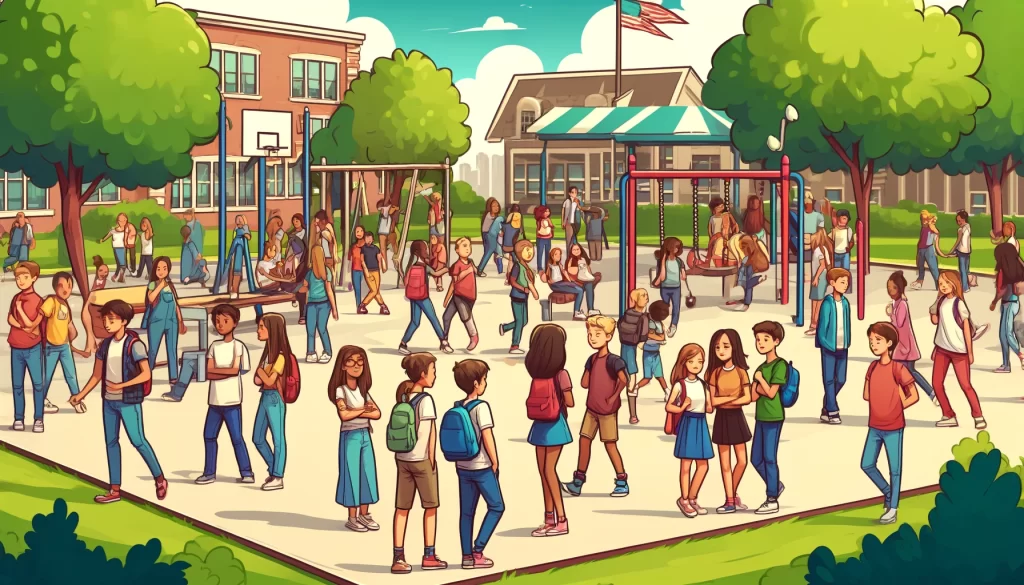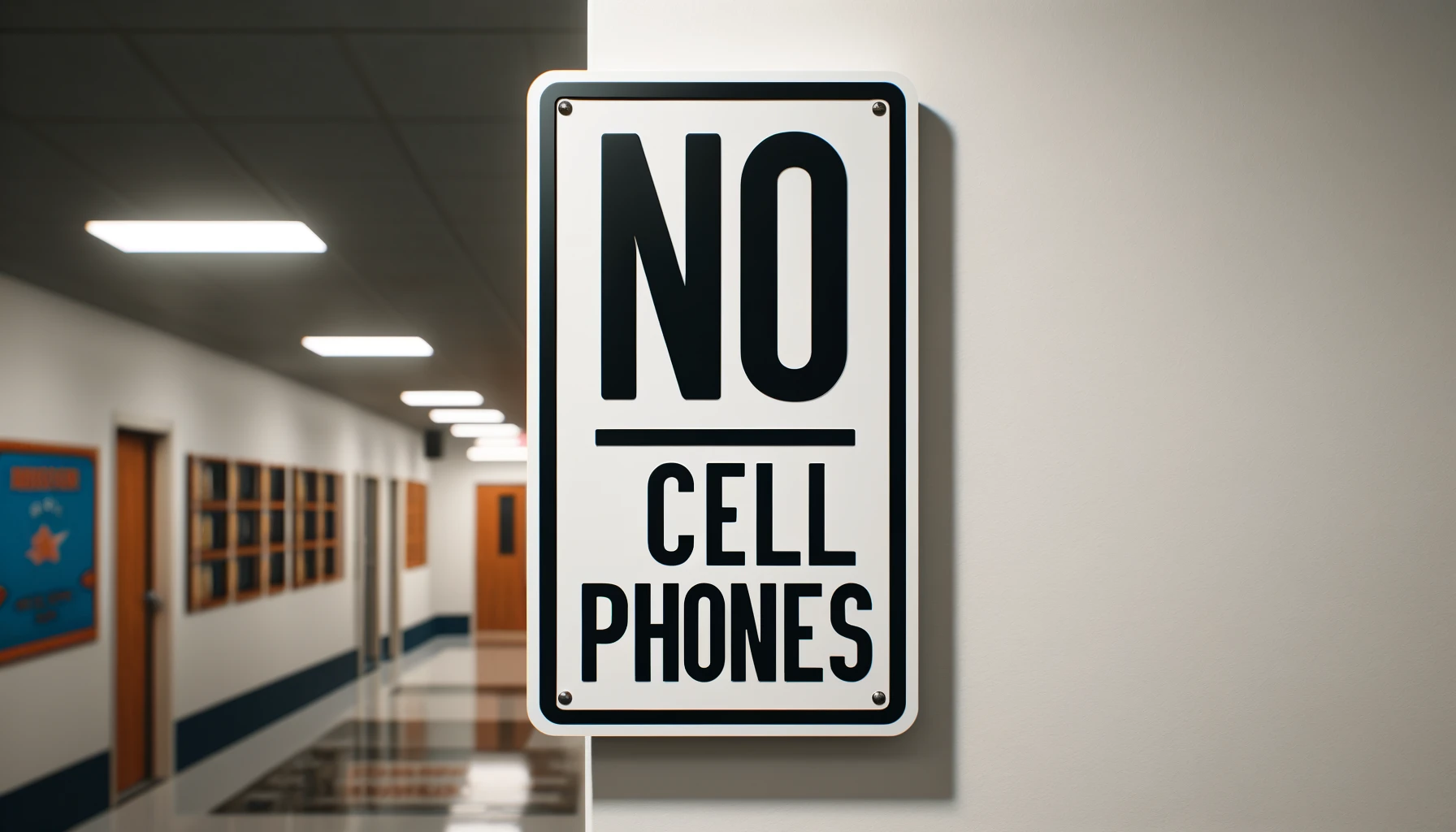Two years ago, when Raymond Dolphin took on the role of assistant principal at a middle school in Connecticut, he quickly noticed a problem: the students seemed off.
The issue? Cellphones. Despite school rules, students were using them in class, and social media was making every disagreement worse. As Dolphin walked through the halls or watched over the cafeteria, he always saw students glued to their screens.
In December, Dolphin took a bold step: he banned cellphones.
This new rule at Illing Middle School met some resistance from students and parents, but it led to significant changes.
Dolphin compared banning cellphones to cutting back on sugary snacks. “In a matter of months, you start feeling better,” he explained.
Many schools across the United States, from California to Indiana to Pennsylvania, have decided to ban cellphones entirely rather than just setting rules about their use.
These decisions are supported by growing concerns across political lines about the potential harms of cellphones and social media on young people. This worry is so widespread that it has prompted warnings from the U.S. Surgeon General and the health commissioner of New York City. Studies show about one-third of U.S. teens are on social media almost all the time.
Dolphin, who is 45, wears rectangular glasses and is often seen with a walkie-talkie clipped to his belt. He started teaching right after college, briefly worked in banking, and then returned to education ten years ago. Only recently has the presence of phones in school become “overwhelming,” he notes.
On a chilly morning in March at 7:50, Dolphin was at his usual post near the school entrance to oversee a new system. Soon, over 800 middle schoolers, some loud and others sleepy, streamed in wearing bulky backpacks and warm jackets.
Students who brought cellphones had to place them in individual gray pouches made of synthetic rubber. These pouches locked magnetically and were either placed in their backpacks or shown to teachers. The phones stayed locked away until the school day ended at 2:45 p.m.
The introduction of these pouches, made by a company called Yondr, wasn’t easy. Many students were unhappy at first. “I cried,” admitted Michael Wilson, 14, when he learned his phone would be locked up during school hours. He even signed a petition in the cafeteria asking the administration to reconsider.
Chioma Brown, dressed in a gray sweatsuit and Crocs, locked her glittery phone cover into her pouch. Initially upset, she later found that without her phone, she could focus better on her classes. Now, she often forgets she even has her phone with her.
Teachers, initially doubtful about the pouches, now find them incredibly effective. Dan Connolly, an eighth-grade science teacher, used to start each class by telling students to put away their phones. “Now the first thing I say is, ‘Good morning,’ not ‘Take your AirPods out,’” Connolly said.
Illing Middle School, like most U.S. schools, already had a rule against phones in class, but enforcing it was hard and often depended on individual teachers. Jonathan Haidt, a psychologist at New York University, described such policies as an “unenforceable wish” and advocated for banning phones from schools.
Justin Pistorius, a math teacher at Illing, shared that enforcing the old rule led to constant conflicts with students. “Why are you the dude that’s doing this? The lady last year let us use them. You’re the jerk,” Pistorius remembered students would complain.
Yondr, the company behind the magnetically locking pouches, was founded in 2014 and initially targeted concerts and other events. Recently, however, its focus on schools has grown dramatically.
Last year, the number of U.S. schools using these pouches jumped to 2,000, said Sarah Leader, a spokesperson for the company, more than doubling from 2022.

Schools from Manhattan to rural Texas have adopted these pouches, distributing them to thousands of students. In Providence, Rhode Island, all six middle schools and two high schools now use them, impacting about 4,500 students.
Some educators felt they had no choice but to try these pouches. Carol Kruser, then the principal at Chicopee High School in Massachusetts, introduced them in the spring of 2021. Teachers were desperate for a solution as students were increasingly distracted by their phones, even during class. “I really wasn’t sure if it was going to be career suicide,” Kruser, who is now an assistant superintendent, admitted. “I just thought it was that important.”
Three years after Illing Middle School introduced cell phone pouches, their use has expanded to neighboring school districts. Recently, Massachusetts even started a grant program to help fund these pouches.
Susan Linn, a psychologist and lecturer at Harvard Medical School, questioned the logic of allowing phones in schools. “We have these devices which we know are at best habit-forming and at worst addictive that are increasingly linked to depression and loneliness,” she said, adding, “So why would we have them in schools?”
Last fall, assistant principal Raymond Dolphin proposed the idea to the principal and district leaders, who were supportive. The school then spent $31,000 on the necessary equipment. Convincing parents and students, however, was more challenging.
Parental concerns fell into three main categories. Some worried about contacting their children in emergencies. Others had children who used their phones to manage anxiety with music or meditation apps. And some parents simply appreciated the convenience of easy contact during the school day.
The school countered these concerns by reminding parents that each classroom had at least one landline phone, sometimes two. Teachers also kept their cellphones for urgent needs, like calling 911. Dolphin emphasized that the pouches could be quickly cut open in emergencies, such as a school shooting, but that even in such an emergency students should focus on hiding and staying quiet rather than using phones.
For students using cellphones to manage anxiety, the school developed a plan to gradually wean them off. They could visit an office to have their pouches unlocked, but this need faded within weeks.
Parents who needed to communicate last-minute changes to their children had to adjust. They were encouraged to call the school office, which would relay messages to students. This situation introduced some students to using a landline for the first time.
The school’s administrators noticed significant changes. Instances of group vaping, sharing inappropriate photos via AirDrop, and social media arguments during school have all ceased.
Pistorius, the math teacher, observed shorter restroom breaks among students, as these are no longer opportunities to use phones.
Four months into the pilot, most parents have adjusted to the pouch system, with some even appreciating it. As long as there are emergency communication plans, such as accessible school phones, parents like Donaree Brown are satisfied.
At dismissal, students use wall-mounted unlocking stations near the exits to open their pouches. While some students might secretly keep phones in their backpacks, using them during school leads to automatic detention.
Despite initial resistance, Dolphin noted that in one-on-one conversations, many students have admitted feeling more connected to their peers without the distraction of phones. He believed the intensity of students’ lives has lessened, as they are no longer constantly absorbed in their screens.
Students themselves noticed a shift. Serenity Erazo, 14, mentioned that without her phone, she engages more in conversations. Gabe Silver, another eighth-grader, initially found the environment quieter without phones but soon noticed more face-to-face interactions, enhancing their social development.
Nicole Gwiazdowski, 14, admitted that even though she complied with the original no-phone rule, her phone was still a distraction when it buzzed with notifications. Now, with everyone more focused in class, she realized that missing out on phone notifications isn’t as significant as feared. “You don’t miss anything. Nothing important is happening outside school,” she shared.
This article is based on the following article:
https://www.washingtonpost.com/nation/2024/05/01/school-cellphones-confiscate

Background Information
By understanding these foundational elements, readers can better appreciate the reasons behind the cellphone ban at Illing Middle School and similar actions in other schools. They can also critically assess the broader implications of such policies on student life and learning.
1. Impact of Cellphones and Social Media on Adolescents
- Addiction and Habit Formation: Research indicates that cellphones and social media can be addictive due to their instant feedback loops and the constant availability of new content. This can lead to habit-forming behaviors, where users feel compelled to check their devices frequently.
- Mental Health: There is growing concern among health professionals that excessive use of social media and cellphones can contribute to mental health issues in teenagers, such as depression and anxiety. The platforms often promote comparison and a focus on superficial measures of social acceptance, which can affect self-esteem and social skills.
- Academic Impact: Frequent interruptions from notifications and the impulse to check social media can disrupt students’ focus and reduce their ability to concentrate on educational tasks. This fragmentation of attention can negatively affect learning and academic performance.
2. Psychological and Social Effects of Technology in Schools
- Social Skills: Face-to-face interactions are crucial for developing social skills in adolescents. Overreliance on digital communication can hinder the ability to engage in and learn from real-life social situations.
- Safety and Emergencies: While cellphones can be a safety tool in emergencies, their use during critical situations can sometimes contradict established safety protocols, such as those designed to keep students safe during school shootings.
- Equity Issues: Access to technology can vary greatly among students due to economic differences, which can create disparities in how students engage with technology and benefit from or are hindered by its presence in the school environment.
3. Role of School Policies in Managing Technology Use
- Enforcement Challenges: Schools have found it difficult to enforce cellphone policies consistently. This inconsistency can lead to frustration among staff and students and can undermine the learning environment.
- Innovative Solutions: Products like the Yondr pouches are used as a means to help enforce these policies more uniformly. They physically prevent students from accessing their devices during school hours, thus eliminating the need for teachers to constantly monitor phone use.
- Parental Concerns and Communication: Schools need to balance the need for security and focused learning environments with parents’ desires to contact their children. This involves providing clear communication channels and ensuring parents understand and support the policies.
Please subscribe to Insight Fortnight, our biweekly newsletter!
